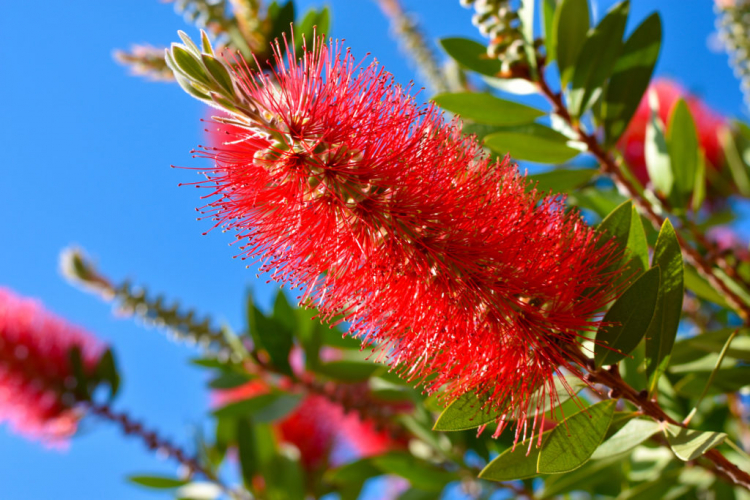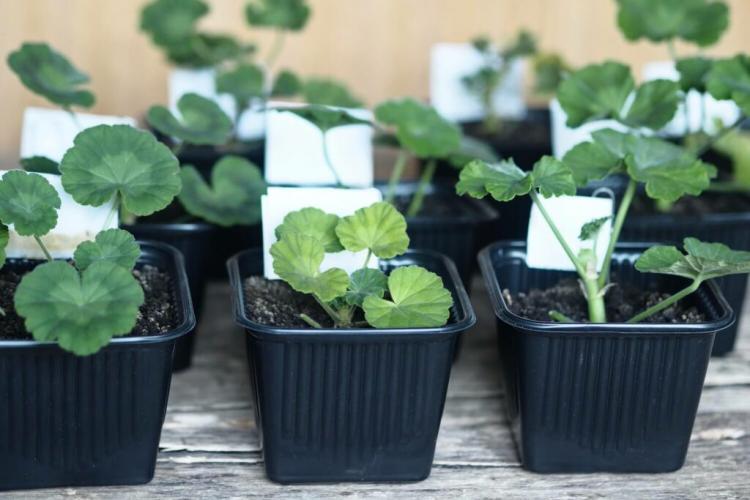Planting onions yourself and growing them at home
Onions go well with a variety of different dishes. Here’s everything you need to know about planting onions in your own garden.
The onion ( Allium cepa ) is one of the most popular vegetables ever. It belongs to the Amaryllis family ( Amaryllidaceae ). Whether braised, fried, or raw, the onion should not be missing in many dishes, because it gives every meal a special touch. Even if its origin cannot be clearly defined, it feels very comfortable in the temperate latitudes of Central Europe. We will show you how you can successfully grow onions yourself, what to consider when caring for them, and give you step-by-step instructions for onion sticking and harvesting.
Plant onions and pin them properly
Table of Contents
The onion can also be propagated from seeds, but most gardeners stick their bulbs. This is more convenient and usually more successful. We explain what is important when sticking onions.
Putting onions: the right location
Onions thrive best on loess and clay soils. The balanced nutrient balance, the high proportion of humus, and the constant replenishment make these soils the perfect location. Those who do not find optimal conditions in their garden for growing onions can work compost into their onion beds. Above all, the soil must be loosened deeply. The loosening stimulates the soil life and aerates the deeper layers. This makes it easier for the onions to unfold.

Tip: Would you like to grow onions in a tub or on the balcony? No problem! It is only important that the bucket is big enough so that new daughter onion bulbs can form.
Time to stick the onions
You shouldn’t peg your onions until the end of April. The onions contain a lot of water and are therefore sensitive to cold. From the end of April night, frost can be excluded and the soil temperature is high enough to ensure rapid youth growth. Note: Usually “summer” varieties are planted in the gardens at home. As described above, these are not planted until April. There are also winter varieties that can be mated as early as August. You can then harvest the first onions in late May.
You might so like: Marjoram: How To Grow Spicy Aroma In The Garden
Procedure for sticking onions
Before sticking, the bed should be loosened up well. Plant your onion sets so deep that the sprouts just look out of the ground. The planting spacing should be at least 15 cm in the row, leaving 25 cm space between the rows. Putting them neatly in rows will also make it easier to look after your onions later (chopping weeds, etc.).

Growing onions: a quick guide
- Loosen the soil; Mix in the compost if necessary (preferably in autumn!)
- Sow onion seeds at the end of February / plant onions at the end of April
- Plant onions only deep enough so that the sprouts are at the surface of the earth
- Row spacing 25 cm; Distance within the row at least 15 cm
- Weed weeds regularly to prevent competition
Buy or propagate onions yourself
Buy onions
Onion sets are the surest way to get a big onion harvest. You can buy onions in any well-stocked specialist shop or conveniently order them from various online mail-order companies. Depending on the variety, you can buy a bag with 250 grams of onions for 1.80 €.
Propagate your own onions
After the first year of cultivation, you can multiply your freshly harvested onions yourself. Simply harvest and dry the tubers as described above. Some types of onions can also be propagated by dividing them. To do this, cut the tuber along the base of the shoot so that it is divided in the middle. Both halves of the onion must contain part of the shoot and root attachment, otherwise sprouting is impossible.

Note: The propagation of commercially available kitchen onions is usually not very successful, as these have often been stored for a long time and also come from refined varieties. When refining, high-yielding varieties with a special taste are placed on a resistant base. Refining vegetables is possible at home, but involves a lot of effort and is not always successful.
You might so like: How To Grow Pak Choi: This Is How You Can Sow In The Garden
Propagate onions from seeds
If you want to accompany your onions from the beginning of germination, you can also buy onion seeds. The variety is huge. A sachet of onion seeds is very affordable and is available from online retailers or well-stocked local shops for $ 0.80. Onion seeds can be sown directly in the garden in February or grown in a pot to make small onions.

Tip: If you like it easy, you should buy onions. These are very affordable and usually promise greater harvest success!
Onion varieties: variety for the garden and kitchen
There is a wide variety of onions to choose from. You can roughly divide them into kitchen and vegetable onions. We have put together a small selection of different types for you and explain the differences and special features:
Kitchen onions (rather small and spicy)
- Tonda Musona: white variety; tasty and storable
- Rossa di Toscana: traditional red variety from Italy; round shape; intense taste
- Zittau Yellow: Proven onion variety; solid consistency; good aroma
- Texas Early: late-ripening, yellow variety; larger onions; abundant yields and good aroma
Vegetable onions (rather large and mild)
- Exhibition: Lush Onion; aromatic; Onions can weigh up to 1.5 kg
- The Kelsae: English variety; very mild and large; A bumper harvest: an onion weighing 6 kg!
- Alisa Craig: Also English variety; mild aroma; large onions (> 700g)
You might so like: Sugarloaf Cabbage Planting, Maintaining And Using
Cultivate onions in your own garden
The onion itself is relatively easy to care for. However, there are a few things you should pay attention to ensure that the onion harvest is good. We’ll tell you what is important when it comes to onion care.
Fertilize onions
Onions are light to medium-eating plants. Composting in autumn is a good way to enrich the soil with nutrients and to positively influence the structure of the soil. Subsequent application of fertilizer is then not necessary. Alternatively, a dose of mainly organic tomato fertilizer can also be applied in spring. The potassium contained promotes a good shelf life through stable cell walls. It is important to work in the fertilizer well and cover it with soil, as too much organic matter directly on the surface can encourage the appearance of the onion fly.
Pour onions
Onions like it to be moderately moist. When watering onions, you should make sure that there is no waterlogging. Regular watering at longer intervals is the best option, depending on the weather, to adequately supply your onions with water.
Harvest and store onions
The spicy onion is a long-runner in the kitchen and is used in cooking all year round. We’ll tell you how to harvest your onions and how to preserve and store them for the rest of the year.
You might so like: Fennel Types: New, Old And Resistant Varieties For The Garden
Harvest onions
The onions are ripe and storable from the beginning of August. No gardening tools are required to harvest the onions. Simply pull your bulbs out of the ground by the leaves and spread them out on the garden floor. Stored in this way, the outer skins of the onions can dry out over several days and are therefore durable.

Important: turn your onions regularly while they are drying!
Store onions
When the outer skins of the onions are dry, they can be stored. You can store your onions either hanging or lying down. To hang up onions, simply tie them together at the foliage and hang them in a dark, cool, and dry place.
Note: Do not store onions next to potatoes! The potatoes give off a lot of moisture, which the dry onion skins absorb easily.






